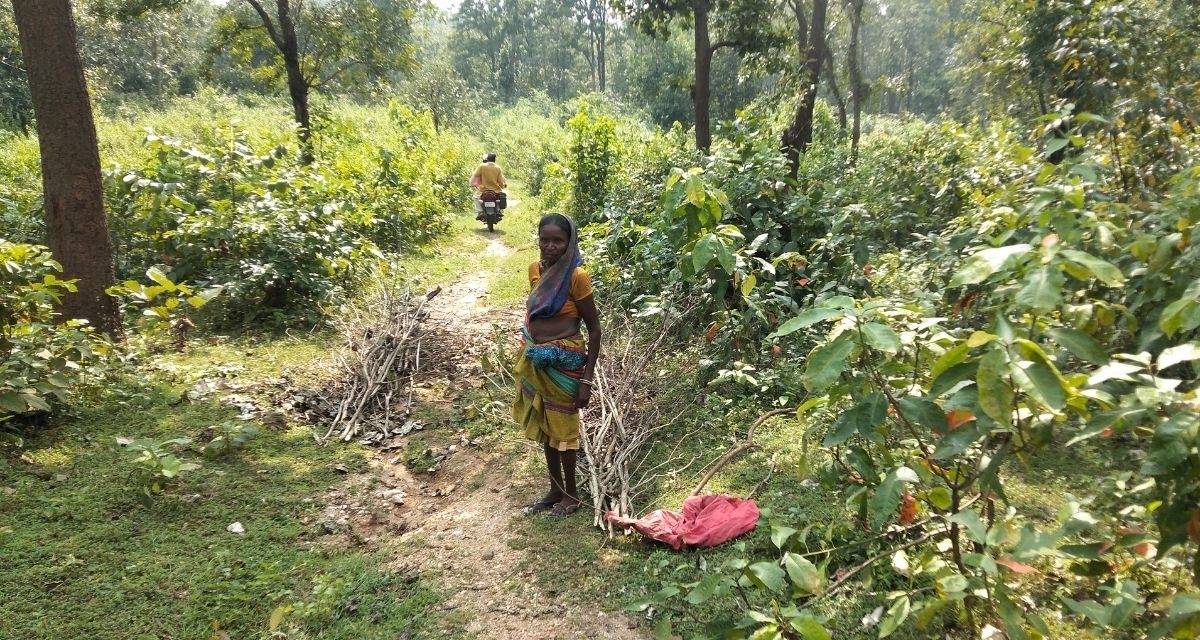The Pipilo forest boasts more than 150 types of trees. Communities in the area benefit by collecting and selling fruits, greens and mushroom varieties from the forests in nearby markets…reports Rahul Singh
During their younger days, Khirodhar Mahto and Jodha Mahto, residents of the Upar Ghat area of the Bokaro district in Jharkhand, were deeply troubled by the gradual decline of thick forest cover around their village. They felt that the diminishing green canopy signalled a silent threat to their existence and that of their village. Prompted into action, they rallied together like-minded conservationists among their fellow villagers and started a campaign to save the forests.
Today, both Khirodhar and Jodha (52 and 55 years old, respectively) witness the fruits of their activism, as they are surrounded by lush and dense forests that benefit both the environment and the community.

Khirodhar Mahato is now the chairman of the local forest conservation committee consisting of 11 members and also the convener of the Bokaro District Forest Conservation Committee. He recalled, “The movement gained traction in 1981-1982. When we organised ourselves to salvage and rejuvenate the forests, it brought awareness and sensitivity among the common people.”
His companion, Jodha Mahto, added, “At that time, the dense forests were fading. Many trees had become stunted, making us aware of the severity of the situation. We realised that if our forests disappeared, then our fields would also become barren, and in turn, our livelihoods would also suffer.”
Unfettered mining
Gulab Chandra, a prominent environmental activist of Bokaro district and convenor of the Damodar Bachao Abhiyan said, “These forests are adjacent to some of the country’s major power and coal-producing industrial units — namely the power generation unit of Bokaro Thermal and coal mining projects of Central Coalfields Limited (CCL). So protecting the biodiversity of the forest land becomes more challenging and necessary.”
Chandra said that in the 90s, through the Sanjeevani Rath, they started a campaign to distribute tree saplings and inspired people to plant them. Under the banner of the Chotanagpur Central Forest Protection Committee, they also encouraged people to plant trees to celebrate the birth of every girl child, thereby reducing female foeticide. In due course, the trees would provide the parents with financial benefits at the time of their daughter’s wedding. The tree became her ‘brother and protector’ and symbolic rakhis were tied to them. This Van Raksha Bandhan movement, popularised by prominent environmentalist Mahadev Mahato, was adopted to safeguard the forests in Pilpilo. The activist’s visit to the village had motivated the people here, who started tying protective threads on the branches of trees and bushes.

“We take a pledge once a year to protect the trees and take out a procession in which women are also equally involved,” said Pushpa Devi (40) from Kanjakiro.
Meena Devi (30), her fellow villager, said, “We stop anyone from chopping trees and make them understand that it will disturb the environmental balance.” Devi is associated with self-help groups of the Jharkhand State Livelihood Promotion Society (JSLPS) and is the chairperson of the village organisation.
The Sakhus of Upar Ghat
Upar Ghat is a sprawling collection of many isolated forests which mainly fall in the Nawadih block area. Until recently, this zone was still a stronghold of Naxalites with numerous instances of unrest. Though not completely eradicated, their presence is receding, with the violence on the ebb for the time being. Nawadih was also in the news when the Bokaro forest division under the Vanvardhan, Afforestation and Land Conservation Scheme for 2020-21 planted 5.9 lakh native tree saplings in 616 hectares of forest land. Other prominent villages in Upar Ghat are the villages of Pilpilo, Kanjakiro and Pipradih in the Kanjakiro Panchayat limits. People of Kurmi, Adivasi and Turi communities reside in these areas.
The Pipilo forest boasts more than 150 types of trees. Communities in the area benefit by collecting and selling fruits, greens and mushroom varieties from the forests in nearby markets.
Dr M.S. Malik, Dean of the Department of Forestry at Birsa Agricultural University, said there haven’t been studies on the Sakhua’s capacity for water harvesting but said that they grow on very less water and are prolific across Jharkhand because of the favourable acidic soil. “If you dig a pit next to the tree, it retains water and doesn’t dry up,” he said. The Sakhua matures over 40-60 years and has medicinal value.
Mahto knows all about the medicinal value of these native trees; it’s committed to a sharp memory. Oil is produced from the fruit of the Kusum tree, and lacquer is also made from it. The fruits of the Kanaud kaur and Sayam core trees are edible. The fruit of the Koraiya tree is used to treat diabetes, while the Bandarlore and Rohan trees have medicinal properties. During the monsoons, khukri/khukdi or futka (mushroom varieties) are found in the forest, foraged and sold at high prices, almost at Rs 400 per kg.
At constant vigilance
In 2020, many trees were felled when the power line was installed through the Teharwa forest adjacent to the Pilpilo forest. Also, stones for the construction of the power units were sourced from the Upar Ghat forests, the quarrying of which caused significant damage to the woodlands, according to Gulab Chandra, the convener of Damodar Bachao Abhiyan. There were no public consultations about any of this, said Khirodhar Mahto. This pushed Chandra and local activists to raise public awareness against the plundering of natural resources and habitats. The incident had rattled many people.

On the condition of anonymity, a former Forest Department official said that if there are government or private industrial activities within the forest limits it is bound to cause damage, then, as a rule, the concerned authorities must make provision for uprooting and transplanting trees that are in the line of destruction in an alternative area. However, no such conservationist endeavours have been recorded in Pilpilo. He also added that there was also much pressure to open the ecologically endangered zones of Upar Ghat to the tourism sector. Attempts to contact A.K. Singh, Bokaro’s Divisional Forest Officer via phone and email have been unsuccessful.
ALSO READ-4 trapped in Jharkhand coal mine come out alive miraculously









